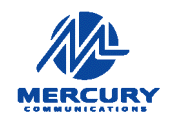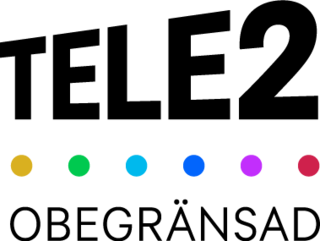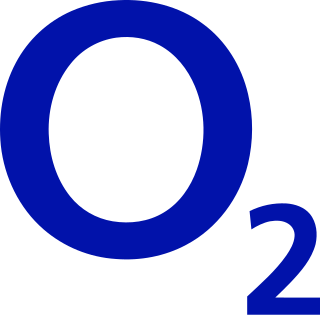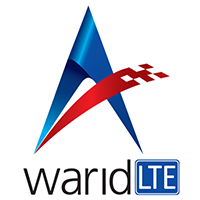
Telia Company AB is a Swedish multinational telecommunications company and mobile network operator present in Sweden, Finland, Norway, Denmark, Estonia, Latvia and Lithuania.

Telefónica, S.A. is a Spanish multinational telecommunications company headquartered in Madrid, Spain. It is one of the largest telephone operators and mobile network providers in the world. It provides fixed and mobile telephony, broadband, and subscription television, operating in Europe and the Americas.

Telenor ASA is a Norwegian majority state-owned multinational telecommunications company headquartered at Fornebu in Bærum, close to Oslo. It is one of the world's largest mobile telecommunications companies with operations worldwide, but focused in Scandinavia and Asia. It has extensive broadband and TV distribution operations in four Nordic countries, and a 10-year-old research and business line for machine-to-machine technology. Telenor owns networks in 8 countries.

Celcom Axiata Berhad is the oldest mobile telecommunications provider in Malaysia. Celcom is a member of the Axiata group of companies. Celcom was merged with Digi to form CelcomDigi on 1 December 2022.

A mobile virtual network operator (MVNO) is a wireless communications services provider that does not own the wireless network infrastructure over which it provides services to its customers. An MVNO enters into a business agreement with a mobile network operator to obtain bulk access to network services at wholesale rates, then sets retail prices independently. An MVNO may use its own customer service, billing support systems, marketing, and sales personnel, or it could employ the services of a mobile virtual network enabler (MVNE).

Mercury Communications was a national telephone company in the United Kingdom, formed in 1981 as a subsidiary of Cable & Wireless, to challenge the then-monopoly of British Telecom (BT). Although it proved only moderately successful at challenging BT's dominance, it led the way for new communication companies to attempt the same.
Rogers Wireless Inc. is a Canadian wireless telephone company headquartered in Toronto, providing service nationally throughout Canada. It is a wholly owned subsidiary of Rogers Communications. The company had revenues of just under $15.1 billion in 2018. Rogers Wireless is the largest wireless carrier in Canada, with 13.7 million subscribers as of Q2 2023.

Beeline, formerly Bee Line GSM is a telecommunications brand by company PJSC VimpelCom, founded in Russia.

Tele2 AB is a provider of mobile and fixed connectivity, telephony, data network services, TV, streaming and global Internet of Things services, amongst others, to consumers and enterprises. It is headquartered in Kista Science City, Stockholm, Sweden. It is a major mobile network operator in Sweden, Russia, Estonia, Latvia and Lithuania.
A mobile phone operator, wireless provider, or carrier is a mobile telecommunications company that provides wireless Internet GSM services for mobile device users. The operator gives a SIM card to the customer who inserts it into the mobile device to gain access to the service.

Orange Polska is a Polish telecommunications provider established in December 1991. It is a public company traded on the Warsaw Stock Exchange, with a controlling stake owned by Orange S.A., the latter controlling over 50% of this stake by 2002. It operates the following services: PSTN, ISDN, GSM 900/1800 network, ADSL, IDSL, FTTH fibre Internet, Frame Relay, ATM and Inmarsat.
Yettel Bulgaria is the largest mobile network and the third largest fixed telecommunications company in Bulgaria. The company was founded under the name "Cosmo Bulgaria Mobile" in 2001 by OTE and operated under the brand name "Globul" until 2014. In 2013 it was bought by Telenor and changed its name. In August 2018, the company was acquired by PPF, a Czech private investment fund. The company continued to use the Telenor brand until 1 March 2022, when it was renamed to Yettel Bulgaria.

O2 Czech Republic (operating under the O2 brand) is a major integrated operator in the Czech Republic. It is now operating more than six million lines, both fixed and mobile, making it one of the Czech Republic’s leading providers of fully converged services. O2 Czech Republic operates a fixed and mobile network including a 3rd generation network, CDMA (for data), UMTS and EDGE, enabling voice, data and video transmission. O2 Czech Republic is also a provider of ICT services.
Yettel Serbia is a Serbian mobile, fixed, internet and IPTV provider, owned by the Czech investment group PPF. It is headquartered in Belgrade. As of 2020, it is the second largest mobile telephony operator with market share of 36.98%.

Warid was a GSM, HSPA+ and LTE based mobile operator in Pakistan. It was the seventh mobile carrier to enter the Pakistani market. It commenced commercial operations on May 23, 2005 by the Abu Dhabi Group, a business conglomerate in the Middle East and a major investor in Pakistan. It was the first venture of the group in the field of Telecommunication.

DNA Oyj is a Finnish telecommunications group that provides voice, data and TV services. In December 2020, it had over 3.5 million subscription customers. 2.7 million of the customers were using a mobile network and 0.9 million were using a fixed network. DNA is a wholly owned subsidiary of Telenor.

Hutchison 3G Enterprises S.A.R.L., trading as 3 (Three) and Hutchison 3G, is the owner of several originally UMTS-based mobile phone networks and broadband Internet providers, which operate in Hong Kong, Macau, Austria, Denmark, Indonesia, Ireland, Italy, Sweden, and the United Kingdom.

GN Store Nord A/S is a Danish manufacturer of hearing aids, speakerphones, videobars and headsets. GN Store Nord A/S is listed on NASDAQ OMX Copenhagen.

Telenor (India) Communications Private Limited, formerly known as Uninor, was an Indian mobile network operator. The company was a wholly owned subsidiary of Norwegian telecommunications company Telenor Group. In February 2017, Telenor Group announced merging the India business with Bharti Airtel in a no-cash deal with liability of Airtel to take over the outstanding spectrum payments of Rs 1,650 crore post necessary regulatory approvals.
3G mobile telephony was relatively slow to be adopted globally. In some instances, 3G networks do not use the same radio frequencies as 2G so mobile operators must build entirely new networks and license entirely new frequencies, especially so to achieve high data transmission rates. Other delays were due to the expenses of upgrading transmission hardware, especially for UMTS, whose deployment required the replacement of most broadcast towers. Due to these issues and difficulties with deployment, many carriers delayed acquisition of these updated capabilities.
















